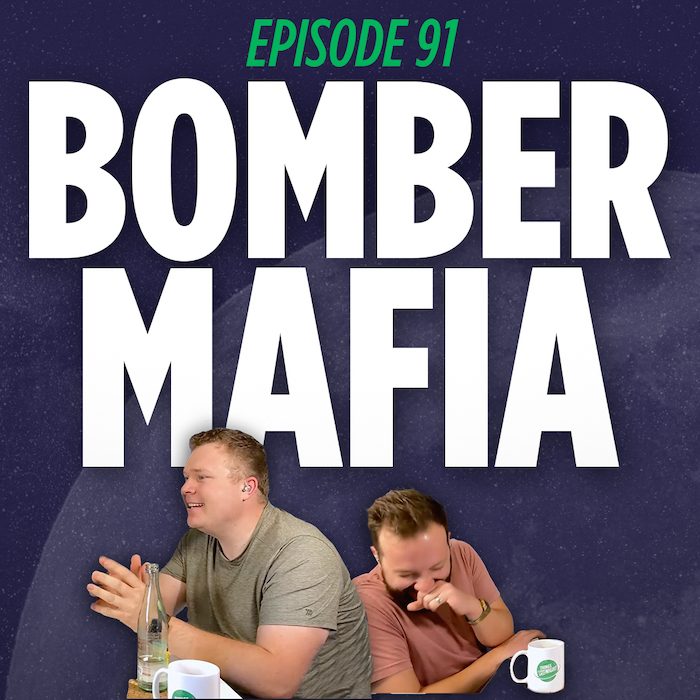In the wake of World War I, virtually everyone on earth knew that we could not afford another war as treacherous as the great war. So, in the US, a group of military leaders forged a small group that would come to be known as the Bomber Mafia. Their theory sounds primitive today, but at the time, it was groundbreaking. To put it simply, the Bomber Mafia hoped to win wars with bombs rather than with ground trips. Furthermore, they believed that they could ensure a minimal loss of life by targeting the most valuable targets for the enemy.
In theory, this plan could revolutionize warfare, and it did, but not in the ways they expected. The members of the Bomber Mafia have long since died, but their ideals are still in practice. Unfortunately, even with the advent of modern technology that makes their dreams far more attainable, their legacy is arguably worse than they were trying to prevent.
The Story of the Bomber Mafia
History will long remember the devastation brought on during the first world war. The trench warfare, the gas, everything about it was horrific. Yet, anyone involved went home with thoughts of how war could be conducted better, if not ended altogether. The Bomber Mafia was another one of these groups.
Harry L. George led the air corps tactical school, the Army group that served as the precursor to the US Air Force, and taught his students a new way to do war. His theory was that by using bombers to strike strategic targets, such as bridges and aqueducts, the bombing could cripple an enemy to the point of inevitable loss with a severe decrease in the loss of human life. The theory, however, remained little more than a theory. Most military professionals scoffed at the idea believing it would never work. Even still, George was recruiting a committed group of followers.
Pearl Harbor and A Change of Heart
Everything changed on December 7, 1941, when a coordinated air attack on the US outpost in Hawaii shocked the nation. All of a sudden, all the military professionals remembered the Bomber Mafia. They recruited one of the leaders of the Bomber Mafia and promoted him to general. Haywood Hansell took on the title with high hopes. However, his hopes never came to fruition, and after a series of lackluster campaigns, he was fired and replaced by Curtis LeMay.
LeMay was met with significantly more success with the Bomber Mafia’s tactics. His stone-cold demeanor is at least partially to blame. He did the math and noted that the odds were remarkably in favor of the pilots never to be hit by anti-aircraft artillery. In response to this discovery, LeMay commanded his troops not to use evasive maneuvers and fly straight to their target. Unsurprisingly, the math did not convince his unit of this idea, so LeMay flew the lead plane himself, and the mission was a substantial extreme success. Over and again, LeMay took these tactics to the battlefield and brought the dreams of the Bomber Mafia to life. Or so it seemed.
The Fog of War
There is a well-known phenomenon within the military called the fog of war. It is when the effects of war cloud the judgment of soldiers and generals alike. For soldiers, It is as if they are literally in a fog. It seemed like this was happening to LeMay because, over the years, he transitioned from a strategy that only targeted high-value assets to an approach more similar to the UK’s system of just flattening the city. And this is exactly what LeMay did.
The Fire Bombing of Tokyo
It all came to a head with the invention of Napalm, then known as firebombs. The Allies had already attained victory in Europe. However, the pacific was still a significant threat to the western powers. So LeMay latched on to Napalm, seeing it as a beneficial weapon against the dense wooden Japanese cities.
On one fateful night in march of 1945, under the command of LeMay, 279 B-29 Bombers flew into Tokyo and dropped 1,510 tons of bombs. Tokyo was estimated. An estimated 100,000 Tokyo civilians were killed in six hours, over a quarter million buildings were destroyed, and over 1 million Japanese citizens were left homeless. Historians have called this the deadliest six hours in history because it was the significant loss of human life in a single event in recorded history.
Conclusion
The Fire Bombing of Tokyo wasn’t the end of the story. The US Military, led by General Curtis LeMay, bombed every other major city in Tokyo, except two. The two he didn’t firebomb? Hiroshima and Nagasaki. The Bomber Mafia sought to fight a way to do war justly and save as many human lives as possible. Instead, it found a far more devastating form of warfare that, unfortunately, stuck. Today, precision airstrikes are the standard operating procedure for significant militaries around the world. This certainly is not what the Bomber Mafia had in mind. Find out more about the Bomber Mafia in this episode of the educational comedy podcast Things I Learned Last Night.
Things I Learned Last Night is an educational comedy podcast where best friends Jaron Myers and Tim Stone talk about random topics and have fun all along the way. If you like learning, and laughing a whole lot while you do, then you’ll love TILLN. Watch or listen to this episode right now!
Sources
The Firebombing of Tokyo – Wikipedia
Related Episodes
Tell Us What You Think of This Content!
Don’t forget to share with your friends!

